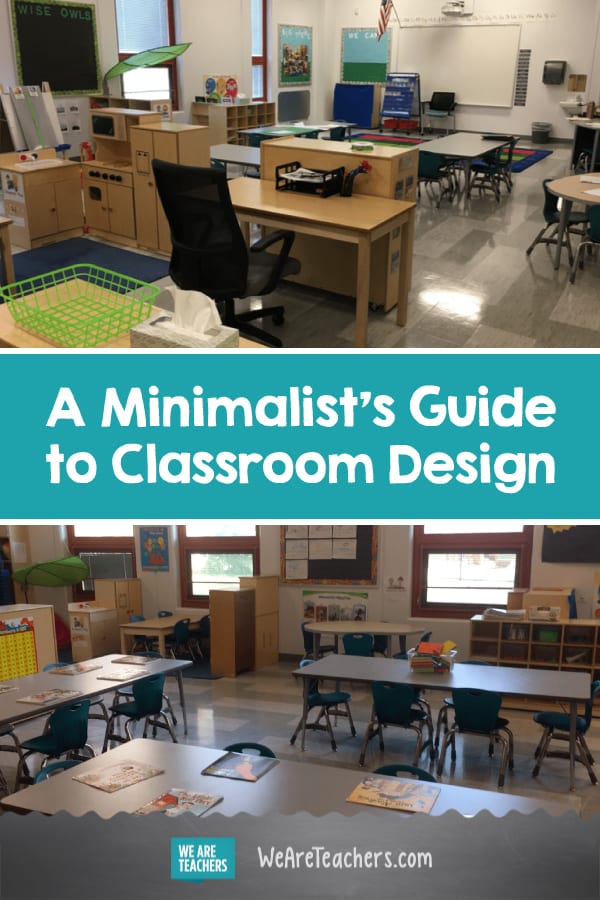Welcome to the world of minimalist classroom decor! As an educator who has spent years refining my classroom environment, I can attest to the transformative power of a minimalist approach. Not only does it foster creativity and reduce distractions, but it also promotes a sense of calm that can enhance learning. In this article, we’ll explore various aspects of minimalist classroom decor, practical tips, and personal experiences, all while ensuring you leave with a comprehensive understanding of how to implement this style effectively.
Understanding Minimalist Classroom Decor
Minimalist decor is not just about having fewer items; it’s about creating an intentional space that promotes focus and clarity. But what exactly does that look like in a classroom setting?
What is Minimalism in Design?
Minimalism, in design, refers to a style that emphasizes simplicity and the elimination of excess. In the context of a classroom, this means choosing decor that is functional, organized, and aesthetically pleasing without being overwhelming.

Key Characteristics of Minimalist Classroom Decor
- Neutral Color Palettes
- Simplified Furnishings
- Functional Decorations
- Open Space
- Natural Light Utilization
Benefits of Minimalist Classroom Decor

Implementing minimalist decor in the classroom comes with several benefits:
| Benefit | Description |
|---|---|
| Enhanced Focus | Fewer distractions help students concentrate on their tasks. |
| Encourages Organization | With less clutter, students can learn to keep their spaces organized. |
| Promotes Calmness | A serene environment reduces anxiety and stress among students. |
| Improves Creativity | A clean slate encourages creative thinking and problem-solving. |

Implementing Minimalist Decor in Your Classroom
Now that you understand the benefits, let’s explore how to bring minimalist principles into your classroom.

Step 1: Declutter the Space
Begin by removing unnecessary items. This can be a challenging yet liberating process. Here’s how I approached it:
- Start small: Tackle one area at a time, like your desk or a shelf.
- Evaluate each item: Ask yourself if it serves a purpose or brings joy.
- Donate or discard: Let go of items that no longer fit your vision.
Step 2: Choose Functional Furniture
Opt for versatile furniture pieces that can serve multiple functions:

- Desks: Go for simple, adjustable desks that can accommodate various activities.
- Storage: Choose storage solutions that blend seamlessly with the decor, like cabinets that double as display units.
Comparison Table: Traditional vs. Minimalist Classroom Furniture
| Feature | Traditional Furniture | Minimalist Furniture |
|---|---|---|
| Design | Ornate, often bulky | Sleek, functional |
| Space Efficiency | May occupy excessive space | Maximizes usable space |
| Versatility | Single-functionality | Multi-functional |

Step 3: Select a Calm Color Palette
Colors can greatly affect mood and behavior in a classroom. Here are some tips:
- Choose soft neutrals like whites, greys, and beiges.
- Incorporate natural colors from plants and wooden elements.
- Add subtle pops of color through art or learning materials.
Step 4: Utilize Natural Light
Natural light can significantly enhance a space, making it feel more open and inviting. Here’s how:
- Position desks and seating to take advantage of window light.
- Use sheer curtains to allow light while maintaining privacy.
- Incorporate mirrors to reflect light and create a brighter atmosphere.
Personalizing Your Minimalist Classroom Decor
While minimalism emphasizes simplicity, personal touches are crucial for creating an inviting space. Here’s how to achieve this balance:
Integrating Student Work
One of my favorite ways to personalize my classroom is to create a “wall of achievement”—a dedicated space for showcasing student work. It’s minimalist yet meaningful, and it instills pride in their accomplishments.
Adding Greenery
Plants are a perfect way to add life without overwhelming the space. I’ve found that even a small succulent can brighten up a desk and improve air quality!
Choosing the Right Plants
- Low Maintenance: Consider spider plants or pothos.
- Air Purifiers: Aloe vera is not only beautiful but also purifies the air.
Pros and Cons of Minimalist Classroom Decor
Pros
- Promotes focus and productivity.
- Encourages organization and responsibility.
- Creates a calming and inviting environment.
Cons
- May require more planning and effort initially.
- Can feel too sparse if not done carefully.
- Students may need time to adjust to a less decorated space.
FAQs About Minimalist Classroom Decor
What types of decorations work best in a minimalist classroom?
Functional items that serve a purpose, artwork created by students, and natural elements like plants are ideal. Look for decorations that enhance learning without adding visual clutter.
How can I encourage students to adopt a minimalist mindset?
Model minimalism through your own classroom. Engage students in discussions about the benefits of a clutter-free environment and involve them in the decluttering process.
Is a minimalist classroom suitable for all age groups?
Absolutely! A minimalist classroom can be adapted to any age group. However, it’s essential to balance simplicity with the need for vibrant learning materials, especially for younger students.
How do I maintain a minimalist classroom over time?
Regularly assess your space and items. Schedule decluttering sessions at the start of each term or semester to ensure that your classroom remains organized. Involve students in this process to empower them to take ownership of their environment.
Conclusion: Embrace Minimalism for a Better Learning Environment
As you embark on your journey towards minimalist classroom decor, remember that the goal is to create a nurturing and inspiring environment for your students. With intentional choices and a focus on simplicity, you can foster a space that enhances learning while promoting well-being. Drawing from personal experience, I can tell you that embracing minimalism in my classroom has not only made it visually appealing but has also significantly improved the atmosphere for both my students and myself. Are you ready to create your own minimalist classroom?